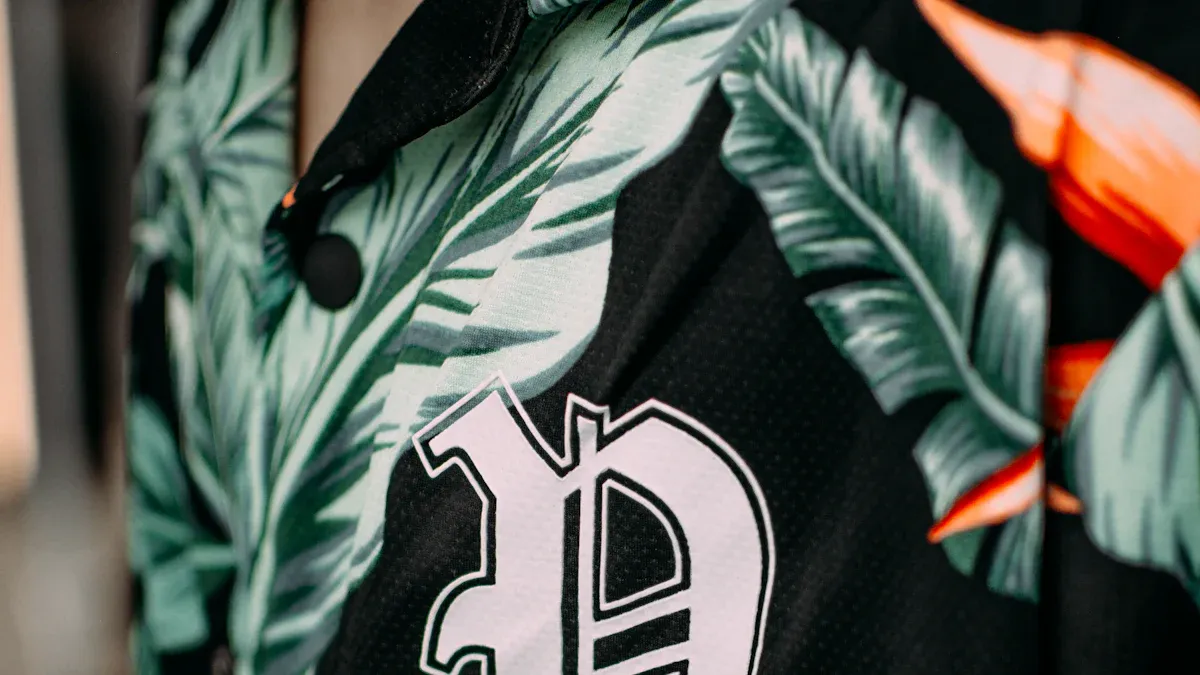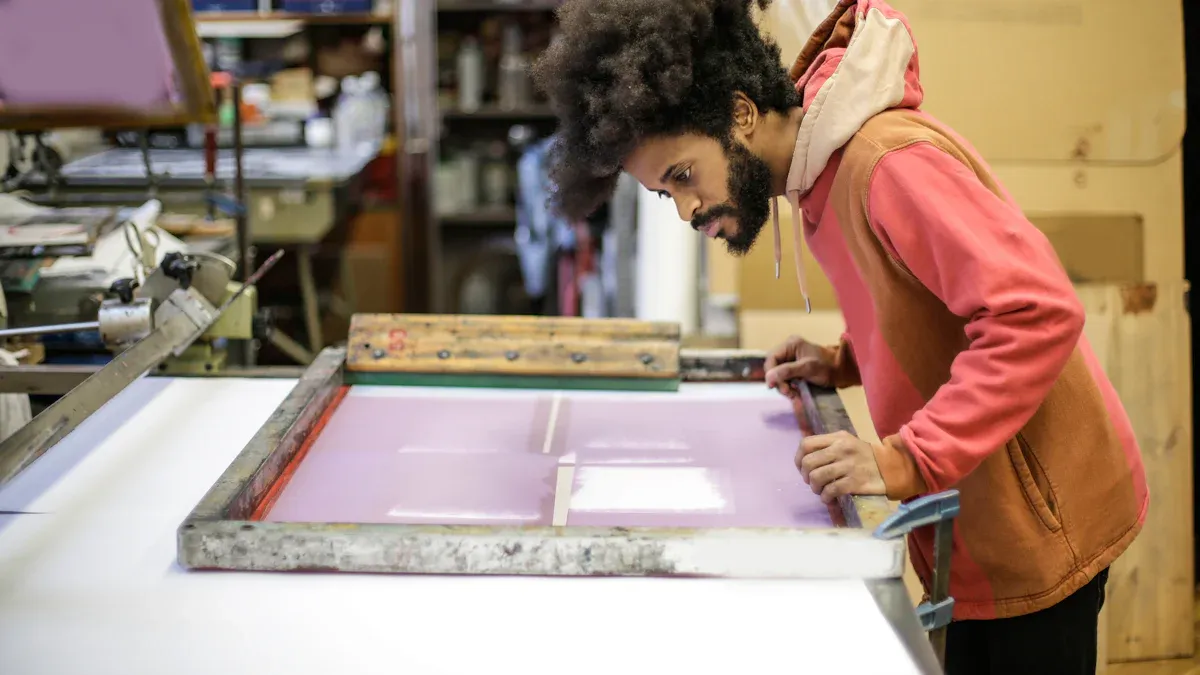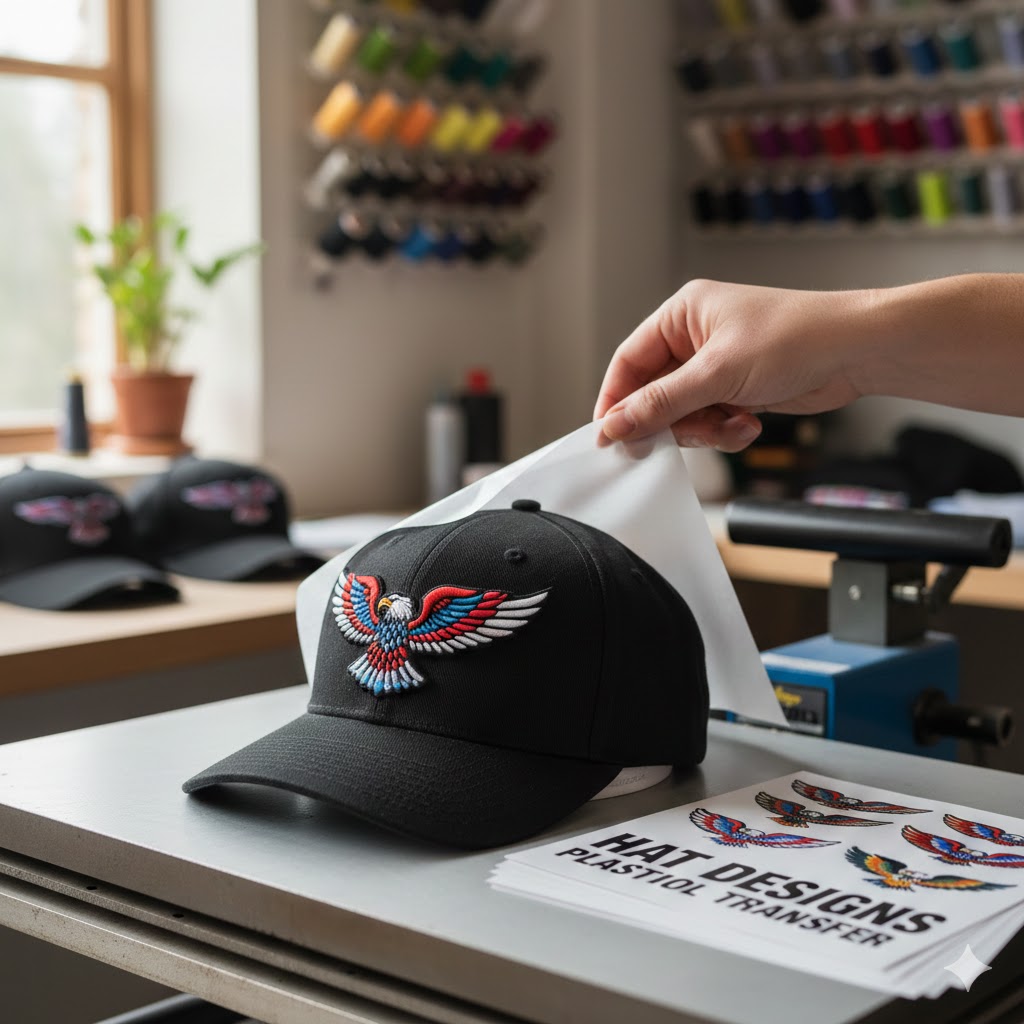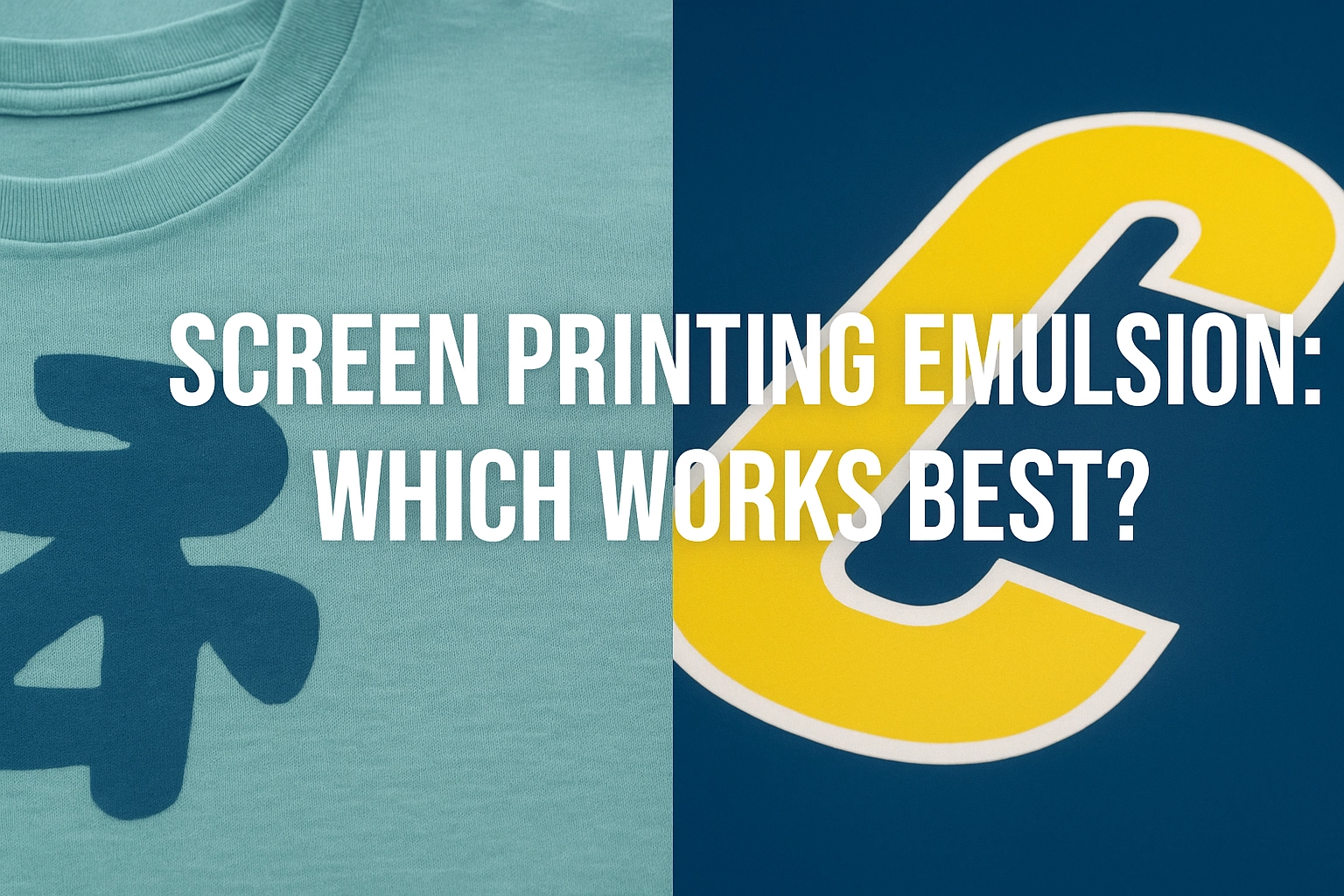Best Fabric for Screen Printing
Screen printing an old-school craft that never goes out of style—slap some ink through a mesh screen, and you’ve got vibrant, durable designs on fabric. Whether you’re throwing a killer logo on a tee or giving a tote bag some artsy vibes, this technique delivers. But listen up, picking the right fabric is the make-or-break deal. Nail it, and your prints pop with crisp lines and colors that stick through wash after wash. Screw it up, and you’re stuck with blurry, cracking designs that flake off faster than cheap paint. Fabric’s absorbency, texture, stretch, even its color—all of it messes with the final look. This guide’s here to set you straight on choosing the best fabrics for screen printing, so your projects come out looking pro from start to finish.
Understanding Screen Printing and Fabric Compatibility
What’s Screen Printing
Screen printing’s about pushing ink through a fine mesh screen to stamp your design onto fabric. Sounds simple, right? You coat the screen with photo emulsion, carve out your pattern, lay it on the fabric, and squeegee the ink through—bam, design’s done. But to make it look dope, you gotta nail a few things. The fabric’s gotta soak up ink just right—too much, and it bleeds; too little, and it won’t stick. Texture needs to be smooth, or rough surfaces make your edges look like they got chewed up. Stretch, thickness, and the fabric’s chemical makeup also play with how the ink grabs and dries. Get these dialed in, and your prints’ll scream professional.
Why Fabric Choice Matters
Pick the right fabric, and your prints come out sharp as a blade, holding up through dozens of washes without fading or cracking. Pick wrong, and it’s a total dumpster fire. Designs can blur, edges get jagged, or the ink peels off like a bad sunburn. Incompatible fabrics are a nightmare—some are too slick, so ink slides right off; others are too rough, killing fine details; and super stretchy ones warp your design until it looks nothing like the original. Choosing fabric ain’t just grabbing any old cloth. You need the right absorbency, texture, and durability to match your printing goals, or your project’s gonna crash and burn.
Characteristics of Fabrics Ideal for Screen Printing
Smoothness and Texture
Want prints that look laser-etched? Go for a smooth fabric surface. Rough textures mess with ink flow, leaving edges fuzzy and details smudged. Smooth fabrics let ink spread evenly, giving you razor-sharp lines and solid colors. Cotton and cotton-poly blends are champs here, with tight, flat surfaces perfect for detailed logos or intricate patterns. Canvas is a bit coarser but still uniform enough for rugged designs. When picking fabric, run your hand over it—feel if it’s smooth enough to let your print shine.
Absorbency
Absorbency’s like the chemistry between fabric and ink. The fabric’s gotta drink up ink just right to keep patterns sharp and stuck. Too absorbent, and ink bleeds out like a watercolor mess; not enough, and it sits on top, ready to flake off at the first scratch. Cotton’s a beast at soaking ink deep into its fibers, making prints that last through wash cycles. Polyester’s less thirsty, but with the right ink, it works. It’s all about balance—test your fabric with your ink to make sure it grabs tight without running wild.
Durability and Stretch
Nobody wants a design that cracks or fades after a couple washes. Durable fabrics keep your prints looking fresh over time. Cotton and cotton-poly blends are rock-solid, with fibers that hold ink tight even after heavy use. Stretchy fabrics like spandex blends need extra care—pull them, and your design might distort, ruining the look. Non-stretchy stuff like canvas or pure cotton is more stable, great for bags or anything that needs to keep its shape. Think about how your product’s used—high-stretch fabrics work for gym gear, but pair them with ink that can handle the flex.
Color and Fabric Base
Fabric color sets the stage for your design’s wow factor. Light fabrics like white or pale gray make ink colors pop, vivid and punchy, perfect for most designs. Dark ones like black or navy need a white underbase before colored ink, or your design looks dull, like it’s stuck in fog. Light fabrics are easier and cheaper to print, but dark ones add a premium vibe if you nail the technique. Match your design’s colors to the fabric—light base for bright patterns, dark base for bold, moody ones—to make your prints stand out.
Top Fabrics for Screen Printing
Cotton
Cotton’s the MVP of screen printing, soaking up ink like a sponge so designs sink deep and stay crisp. Its smooth, tight texture gives you sharp edges and killer detail. T-shirts, tote bags—cotton’s your go-to for everyday stuff that feels comfy and looks great. Downside? It loves to shrink, so toss it in the washer before printing, or your finished piece might end up kid-sized. Go for high-thread-count cotton for an even smoother surface that takes your prints to the next level.
Cotton-Polyester Blends
Cotton-poly blends are the Swiss Army knife of fabrics, mixing cotton’s ink-grabbing power with polyester’s toughness and less shrinkage. They hold up through tons of washes, keeping designs and fabric in top shape, making them ideal for casual clothes and sportswear. Polyester makes the fabric less wrinkly and more structured. Only hitch is polyester’s weaker ink grip, so use inks made for blends to keep designs locked in. A 50/50 cotton-poly mix hits the sweet spot for feel and print quality.
Polyester
Polyester’s the king for sportswear and outdoor gear, delivering prints so vibrant they practically glow, plus it wicks sweat to keep you dry. Its fibers make ink pop with crazy contrast, perfect for bold designs. Think tank tops or jackets—polyester nails it. But it’s picky with regular inks, so you’ll need plastisol or sublimation inks, which means a trickier process. Check the fabric’s smoothness when choosing—rough polyester can mess with fine details.
Canvas
Canvas is a beast, tough as nails with a gritty texture that’s great for heavy-duty prints. It guzzles ink, giving designs a bold, almost 3D feel, making it perfect for bags or home decor like pillows or curtains. Tightly woven canvas gives you smoother, more even prints. It’s ink-hungry, though, so expect to use more and budget for higher costs compared to thinner fabrics.
Linen
Linen’s got that natural, upscale vibe with a rugged, eco-friendly texture, ideal for high-end clothes or home goods like tablecloths or artsy shirts. It grabs ink well, holding designs through washes without fading. Its uneven weave can blur super detailed patterns, so stick to simple or hand-drawn styles. Keep linen taut during printing—its loose fibers can shift and throw off your screen’s alignment.
Fabrics to Avoid for Screen Printing
Highly Textured Fabrics
Fleece and terry cloth are fluffy nightmares for screen printing. Their shaggy surfaces make ink spread unevenly, leaving blotchy patterns with blurry edges. Terry’s loopy fibers trap ink in high spots while low areas stay bare, making prints look like a dog chewed them. Need crisp designs? Skip these and grab something smoother to keep your work legit.
Non-Absorbent Synthetics
Nylon and some acrylics are like Teflon for ink—they just don’t play nice. Their slick surfaces repel standard inks, which peel off in days. Nylon’s tight fibers block ink from sinking in, leaving designs that rub off with a little friction. Acrylics might do slightly better, but you’re still stuck with special inks and extra prep work. Save yourself the headache and stick to fabrics that actually hold ink.
Delicate or Thin Fabrics
Silk and chiffon are delicate divas—too thin and fragile for screen printing’s rough touch. Ink bleeds through, turning designs into a runny mess. Silk’s fine fibers stretch or tear under pressure, and chiffon might rip just from the screen’s weight, clogging your mesh with ink. Want these fabrics? Go digital printing—screen printing’s way too harsh for them.
Tips for Choosing and Preparing Fabrics
Testing Fabrics Before Printing
Jumping straight to bulk printing’s a rookie move. Test prints save your butt by showing if a fabric’s up to snuff. Grab a scrap, print a simple design, and check how the ink sticks, if the pattern’s sharp, and if edges stay clean. Judge the fabric by:
- Absorbency: Does ink sink in deep or bleed out?
- Texture: Smooth enough to hold details?
- Durability: Still good after a few washes?
Log your results and pick the winner. This small step keeps you from a world of rework pain.
Pre-Treatment and Washing
Don’t print on fresh fabric straight from the store—run it through the washer first. Pre-washing kills starches and chemical residues that block ink, making designs peel. Cotton needs this bad to avoid shrinking—nobody wants a shrunken tee post-print. Dry it and check for warping. For better ink grip, hit the fabric with a pretreatment like a base primer, especially for polyester or blends. It makes fibers cling to ink, boosting durability.
Matching Inks to Fabrics
Inks and fabrics gotta vibe like best buds. Water-based inks are eco-friendly and breathable, great for cotton and linen, giving T-shirts a soft, natural feel, but they’re less durable. Plastisol inks are tough, sticking hard and staying bright on polyester or cotton-poly blends through endless washes, though they feel stiffer. Tricky fabrics like nylon need specialty inks like sublimation or silicone—complex but worth it. When choosing, think:
- Fabric Type: Water-based for natural fibers, plastisol or specialty for synthetics.
- Use Case: Soft inks for casual wear, tough ones for gear.
- Look: Plastisol for vivid colors, water-based for a chill vibe.
Get the combo right, and your prints’ll steal the show.
Environmental and Cost Considerations
Eco-Friendly Fabric Options
Wanna make your screen printing project a little greener? Organic cotton and recycled materials are the way to go. Organic cotton’s grown without nasty pesticides, with pure fibers that suck up ink for crisp, wash-safe prints. It’s perfect for T-shirts or totes and scores eco points. Recycled polyester, made from old plastic bottles, cuts waste while keeping prints vibrant. Sustainable printing means using low-VOC water-based inks to cut emissions and streamlining your process to waste less fabric and ink. Customers dig this stuff—green fabrics are good for the planet and make your brand look classy.
Balancing Cost and Quality
Picking fabrics is a numbers game, especially when scale’s in play. Small runs, like a few dozen custom tees, can handle pricier organic cotton or pure cotton for that premium feel and killer prints. Big projects, like thousands of sports jerseys, call for cotton-poly blends or polyester—durable, cheap, and great for bulk buys. Durability matters: cheap fabrics save cash upfront but fade or warp fast, pissing off customers. Spend on sturdy stuff like high-thread-count cotton or quality blends for prints that last and keep your rep solid. Don’t just eye the price tag—think about the product’s lifespan. Quality fabrics pay off in the long run.
Conclusion
Nailing the right fabric is the secret sauce for screen printing that slaps—cotton’s cozy and ink-hungry, polyester’s bold and sweat-wicking, canvas is tough as hell. Steer clear of fleece, nylon, or silk to avoid a hot mess. Test samples first, lean into eco picks like organic cotton or recycled polyester for sustainability and savings, and prioritize durability for the win. Don’t be shy—play with different fabrics, mix and match, and sweat the small stuff. Get it right, and your designs’ll turn heads and take over the streets.





